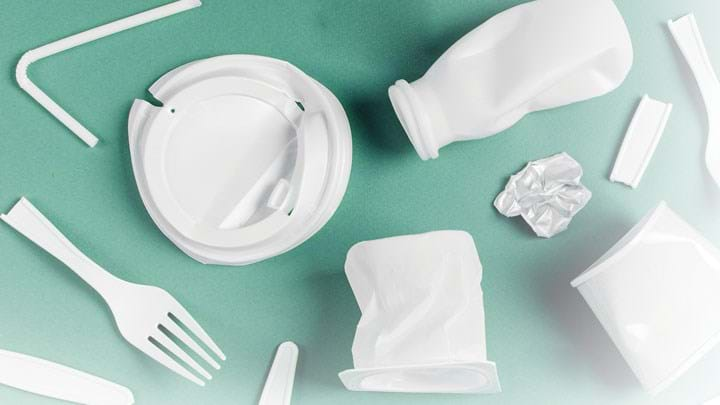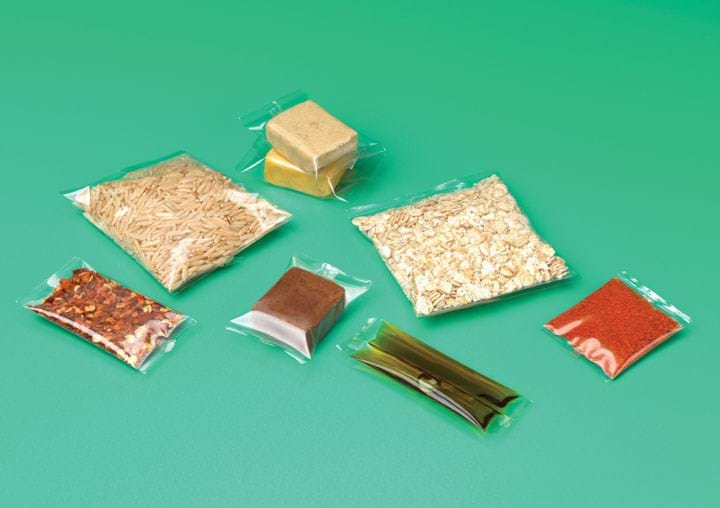Plastic Feedstocks: From Plants and Emissions

Kerry Hebden speaks to researchers exploring novel routes to greener plastics
IT is called one of the biggest environmental problems of our lifetime for a reason. Scientists estimate that there is more than 171trn pieces of plastic currently floating in the world’s oceans – a product of the 400m t of plastic waste that we create every year. And, unless the situation drastically changes, global plastic demand is projected to nearly triple to 1.1bn t/y by 2050.
The biggest culprit is single-use plastic. Around 98% of it is produced from fossil fuel, or “virgin” feedstock, and once used only 9% of plastic waste is recycled. As for the rest, some is incinerated, while the vast majority ends up in landfill, or some place undesirable. Humans for instance are said to ingest 5 g of plastic every week.
But the plastic tide of trash is slowly turning, and a rising, more sustainable wave of alternative solutions to this ubiquitous material, is gaining popularity. One of which is being produced by Xampla, a spin-off from the University of Cambridge, UK. Xampla uses plant-based proteins, and other natural biopolymers for making flexible films, coatings and microcapsules, and it does this by harnessing the intrinsic propensity for natural polymers to self-assemble at the nanoscale. Marc Rodriguez Garcia, the firm’s CTO credits the idea for Xampla’s successful product with initial studies into a different type of material.
“A lot of the early work by Tuomas Knowles, Xampla’s co-founder, was on silk, which at five times stronger than steel is one of nature’s highest performance materials.”
Silk is a fibrous polymeric protein, and the key to its strength is very high-density hydrogen bonds that are arranged regularly in space. Keen to replicate this regular self-assembly in other proteins, Knowles and Rodriguez Garcia started experimenting on plant-based proteins, including soy protein and pea protein due to its availability. All proteins are made up of polypeptide chains, and benefit from being naturally biodegradable and having a low environmental impact. But many plant proteins are also poorly soluble in water – solubility plays a key role in determining a protein’s physicochemical properties – and the extraction process can leave the resulting raw material like “an inert powder,” Rodriguez Garcia explained, meaning they are very difficult to process.
To improve the solubility of the plant proteins, and to get the proteins to unfold and the molecules to interact so that they could be shaped into a final product, the team used a mixture of acetic acid and water, combined with ultrasonication and heat. They observed that after cooling down, new intermolecular beta-sheets structures were formed. Glycerol was also added as a plasticiser, and after the solvent was removed, a water-insoluble film that is similar to a synthetic low-density polyethylene (LDPE) or polytetrafluoroethylene (PTFE) was left. Like silk, its strength is bolstered by the arrangement of the polypeptide chains in the beta-sheet, that are linked in a regular manner by hydrogen bonds.
Because the mechanical behaviour of the film is significantly improved through the self-assembly process, there is no need for reinforcers such as cellulose or chitin, or for chemical modification, which is essential when it comes to biodegradation.
Rodriguez Garcia said that having perfected the process in the laboratory, the Xampla team have been working with process engineers to construct a pilot plant, and are exploring partnerships with manufacturing and chemical companies to scale up production.
“We’ve designed our products so they slot right in with existing manufacturing processes, therefore our customers do not need to change their equipment to be able to use our materials,” he explained.
Xampla’s product completely biodegrades in soil within 28 days, and the firm have already partnered with British meal kit retailer, Gousto, to provide edible packaging. Xampla is also working on a project funded by Innovate UK to extract proteins from agricultural by-products.
“Rapeseed and potato protein cannot typically be used for human consumption because they’ve got too many antinutritional factors, so we’re trying to revalorise those raw materials and turn them into packaging,” Rodriguez Garcia said.

Recent Editions
Catch up on the latest news, views and jobs from The Chemical Engineer. Below are the four latest issues. View a wider selection of the archive from within the Magazine section of this site.




